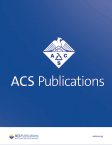干细胞疗法的最新进展:以神经退行性疾病为重点的疗效、伦理、安全问题和未来方向--综述
IF 2.9
Q2 PUBLIC, ENVIRONMENTAL & OCCUPATIONAL HEALTH
引用次数: 0
摘要
神经退行性变是指神经元逐渐丧失,神经胶质细胞发生广泛变化,如星形胶质细胞和少突胶质细胞中的 tau 包涵体、少突胶质细胞中的α-突触核蛋白包涵体和星形胶质细胞中的 SOD1 聚集体,同时运动、认知、学习和行为也发生恶化。常见的神经退行性疾病有阿尔茨海默病(AD)、帕金森病(PD)、肌萎缩侧索硬化症(ALS)、亨廷顿病(HD)、脊髓小脑共济失调(SCA)和核上性麻痹等。神经退行性疾病缺乏有效的治疗方法,科学家们正在努力开发针对这些疾病的疗法。干细胞疗法已成为治疗神经退行性疾病的希望,因为它不仅可以替代受损的神经元,还能分泌其他神经调节剂和神经保护剂。干细胞植入前的终末分化可确保植入正确的细胞,而碳酸酐酶 II、CNPase(2′,3′-环核苷酸 3′-磷酸水解酶)、髓鞘碱性蛋白(MBP)和髓鞘少突胶质细胞糖蛋白(MOG)等分子标记则可阐明分化过程。表皮生长因子(EGF)、角质细胞生长因子(KGF)、血管内皮生长因子-α(VEGF-α)、转化生长因子(TGF)和巨噬细胞炎症蛋白(MIP)等各种生长因子的分泌支持细胞存活、细胞增殖、血管形成、轴突再生和变性部位神经胶质功能连接的形成。干细胞疗法的不良反应,如致畸性和在微环境影响下分化为所需细胞以外的不同细胞,是人们关注的几个关键问题。移植后,阿尔茨海默病患者的突触可塑性得到改善,细胞凋亡受到抑制,tau磷酸化和淀粉样β(Aβ)生成减少。本综述详尽讨论了各种干细胞、其在治疗神经退行性疾病中的应用、局限性和挑战,以及与干细胞疗法相关的伦理问题。本文章由计算机程序翻译,如有差异,请以英文原文为准。
Recent advances in stem cells therapy: efficacy, ethics, safety concerns and future directions focusing on neurodegenerative disorders- a review
Neurodegeneration refers to the gradual loss of neurons and extensive changes occur in glial cells like tau inclusions in astrocytes and oligodendrocytes, α-synuclein inclusions in oligodendrocytes and SOD1 aggregates in astrocytes along with deterioration in the motor, cognition, learning, and behaviour. Common neurodegenerative disorders are Alzheimer’s Disease (AD), Parkinson’s Disease (PD), Amyotrophic Lateral Sclerosis (ALS), Huntington’s disease (HD), Spinocerebellar Ataxia (SCAs), and Supranuclear palsy are some common one. There is a lack of effective treatment for neurodegenerative diseases, and scientists are putting their efforts into developing therapies against them. Stem cell therapy has emerged as a hope for neurodegenerative disorders since it is not only the damaged neurons that might be replaced, but other neuromodulators and neuroprotectors are secreted. Stem cell terminal differentiation before implantation ensures the implantation of correct cells and molecular markers like carbonic anhydrase II, CNPase (2′,3′-cyclic nucleotide 3′-phosphohydrolase), myelin basic protein (MBP), and myelin oligodendrocyte glycoprotein (MOG) elucidate the differentiation. Secretion of various growth factors like epidermal growth factor (EGF), keratinocyte growth factor (KGF), vascular endothelial growth factor-α (VEGF-α), transforming growth factor (TGF) and macrophage inflammatory protein (MIP) supports cell survival, cell proliferation, blood vessel formation, axon regeneration, and neuroglial functional connection formation at the site of degeneration. Adverse effects of stem cell therapy, like teratogenicity and differentiation in different cells other than the desired one under the influence of microenvironment, are a few key concerns. Post-transplantation improved synaptic plasticity, apoptosis inhibition, and reduction in tau-phosphorylation and Amyloid beta (Aβ) production has been observed in Alzheimer’s patients.A large number of experimental, preclinical, and clinical studies have been conducted, and encouraging results have been obtained. The present review exhaustively discusses various kinds of stem cells, their usage in treating neurodegenerative disorders, limitations and challenges, and ethical issues related to stem cell therapy.
求助全文
通过发布文献求助,成功后即可免费获取论文全文。
去求助
来源期刊

ACS Chemical Health & Safety
PUBLIC, ENVIRONMENTAL & OCCUPATIONAL HEALTH-
CiteScore
3.10
自引率
20.00%
发文量
63
期刊介绍:
The Journal of Chemical Health and Safety focuses on news, information, and ideas relating to issues and advances in chemical health and safety. The Journal of Chemical Health and Safety covers up-to-the minute, in-depth views of safety issues ranging from OSHA and EPA regulations to the safe handling of hazardous waste, from the latest innovations in effective chemical hygiene practices to the courts'' most recent rulings on safety-related lawsuits. The Journal of Chemical Health and Safety presents real-world information that health, safety and environmental professionals and others responsible for the safety of their workplaces can put to use right away, identifying potential and developing safety concerns before they do real harm.
 求助内容:
求助内容: 应助结果提醒方式:
应助结果提醒方式:


